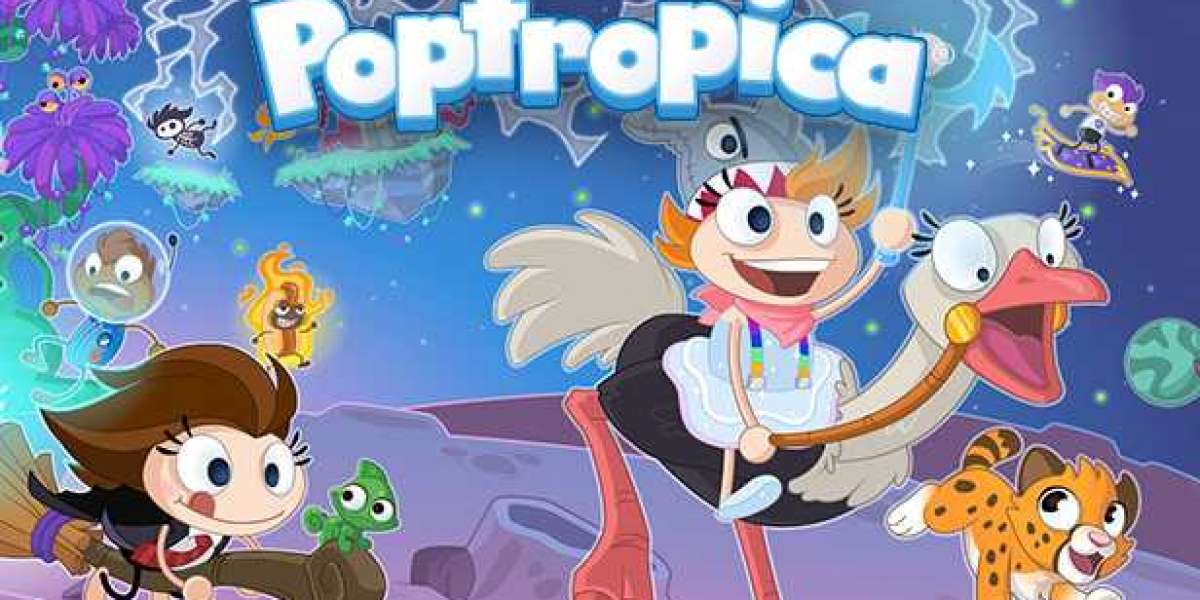Created by Jeff Kinney, the author of the famous Diary of a Wimpy Kid series, Poptropica has stood out as an educational yet entertaining virtual world. This article will take you deep into the history, gameplay, features, islands, strategies, and lasting legacy of Poptropica — and why it continues to hold a special place in the hearts of gamers.
1. The Origins of Poptropica
Poptropica was developed by Pearson Education’s Family Education Network, with Jeff Kinney as the creative director. The game was officially launched in September 2007 as a free online experience for kids aged 6–15. At its core, Poptropica was designed to encourage problem-solving, reading comprehension, and creativity — all while immersing players in an interactive world.
When it first debuted, Poptropica gained attention for its charming art style, easy-to-learn mechanics, and a wide variety of themed “islands” where players could embark on adventures. Over time, it became one of the most popular browser-based games, attracting millions of users each month.
2. How Poptropica Works
At its heart, Poptropica is a point-and-click adventure game. Players create their own customizable “Poptropican” avatar and navigate through different islands, each with its own story, challenges, and quests.
Character Creation
Before starting an adventure, players can personalize their avatar’s appearance by changing:
Hair style and color
Skin tone
Clothing and accessories
One of Poptropica’s fun features is the “Costume Copier,” allowing players to copy the outfits of characters they encounter on their journey.
Movement and Controls
Poptropica uses simple controls:
Arrow keys for movement
Spacebar for actions like jumping or interacting
Point-and-click navigation for talking to characters or picking up items
This accessibility made it perfect for younger players who may not have been familiar with more complex gaming systems.
3. The Islands: The Heart of Poptropica
The islands are what truly set Poptropica apart. Each one is essentially its own mini-game, with a unique plot, puzzles, and setting. Over the years, more than 40 islands have been introduced.
Here are a few of the most iconic islands:
Early Islands
Early Poptropica Island – The first-ever island, a simple but charming introduction where players retrieve missing items for island inhabitants.
Shark Tooth Island – A tropical adventure involving sharks, missing people, and an old legend.
Time Tangled Island – A time-travel mission where players fix historical problems across different eras.
Fan-Favorite Islands
Spy Island – Players uncover a conspiracy involving a secret spy agency.
Mythology Island – A Greek-mythology-themed adventure where players meet gods like Zeus, Poseidon, and Hades.
Skullduggery Island – A treasure-hunting pirate quest across multiple seas.
Special Islands
Poptropica often released limited-time or promotional islands tied to books, movies, and holidays, adding to the game’s excitement.
4. Gameplay Mechanics and Challenges
Each island involves a series of puzzles, platforming segments, and dialogues with non-playable characters (NPCs). Players collect items in their inventory, which can be combined or used in specific situations.
Common challenges include:
Decoding secret messages
Solving logic puzzles
Navigating obstacle courses
Defeating bosses in mini-games
The combination of puzzle-solving and light action makes Poptropica accessible yet engaging for a wide audience.
5. Educational Elements in Poptropica
One of Poptropica’s strengths is its subtle educational value. Many islands are inspired by history, science, or literature:
Time Tangled Island teaches about historical figures and events.
Mythology Island introduces players to Greek myths.
Astro-Knights Island has science-fiction and astronomy themes.
By blending entertainment with learning, Poptropica managed to engage players without making it feel like a school lesson.
6. Multiplayer Features and Community
Although Poptropica is primarily a single-player experience, it has several social elements:
Multiplayer Rooms – Players can chat using safe, pre-selected phrases.
Mini-Games – Compete against other players in games like Sky Dive or Balloons.
Friends List – Add friends to see their progress and outfits.
This balance between privacy and interaction made the game safe for children while still providing a sense of community.
7. Membership and In-Game Currency
Poptropica originally offered free access to most islands, but certain costumes, items, and early island access were reserved for paid members. Players could use:
Credits – Earned by completing islands, used to buy costumes and special powers.
Membership – Monthly subscription granting unlimited access to all content.
While some fans preferred the completely free model, memberships helped support new island development.
8. Transition to Modern Platforms
With the decline of Adobe Flash Player in 2020, many browser games struggled, and Poptropica was no exception. However, the developers adapted by:
Moving the game to HTML5 for browser play.
Launching a mobile app for iOS and Android.
Updating older islands with improved graphics and gameplay.
Although some classic islands were temporarily removed during the transition, Poptropica remains accessible today.
9. Tips and Strategies for Playing Poptropica
Here are some strategies to help you succeed on Poptropica’s many islands:
Explore Every Corner
Always check hidden areas, as items and clues can be tucked away in unexpected spots.
Talk to Every Character
NPCs often give crucial hints or items needed for progress.
Take Notes
Some puzzles require remembering patterns, numbers, or sequences — jot them down.
Use the Map
The map helps track locations, especially on large islands like Skullduggery.
Replay Islands
Replaying can help you notice clues you missed and earn extra credits.
10. The Legacy of Poptropica
Poptropica’s influence extends beyond just being a children’s game:
It introduced many young players to problem-solving and critical thinking.
It inspired fan art, blogs, and YouTube walkthrough channels.
It remains a nostalgic touchstone for players who grew up with it.
Even years after its peak popularity, Poptropica still maintains an active community of fans who revisit islands or introduce the game to younger relatives.
11. Why Poptropica Still Matters
In an era where gaming often focuses on fast-paced action and competitive play, Poptropica offers something different — a slower, story-driven, and thoughtful experience. It encourages exploration, curiosity, and creativity in a safe, fun environment.
Its blend of education, storytelling, and interactivity makes it not just a game, but a memorable part of many players’ childhoods. Whether you’re a longtime fan or a newcomer, Poptropica’s islands remain waiting to be explored.
Final Thoughts
Poptropica may have started as a simple Flash game for kids, but it has grown into a beloved online universe. With its rich variety of islands, charming characters, and puzzle-solving adventures, it continues to provide an engaging and educational escape. The fact that it has survived platform changes and shifting gaming trends is a testament to its quality and enduring appeal.








